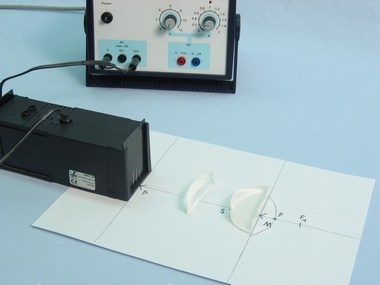
|
|
||||||||||||
|
Technical data Long-sightedness an its correctionArticle no: P1066900

Principle On a model of the long-sighted eye (shorter distance from the retina to the eye lens), the students should experimentally investigate the effect of long-sightedness on seeing distant and near objects. In this way, not only is their understanding of the light path through a convex lens and lens combinations (in particular, with reference to the change in focal length) refreshed, but also possibilities are demonstrated for correcting this defect. The basis for the experiment was already laid down in the experiment on short-sightedness. Here, also, the extrapolation from the level of the model to the construction of the real eye should be made easier with the aid of the teacher. Both experiments are also appropriate for investigation in separate groups (two work groups each investigating a different type of visual defect; at the end, the results are presented and discussed together). Benefits
Tasks What is long-sightedness and how can it be corrected? Investigate with the model eye what effect long-sightedness can have on seeing far away objects and by what means it can be corrected. Scope of delivery
|
||||||||||||
|
|
Robert-Bosch-Breite 10 – 37079 Göttingen – Germany
www.phywe.com

